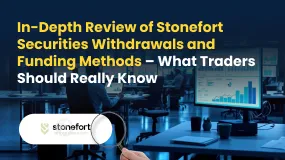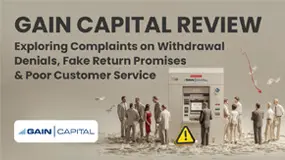简体中文
繁體中文
English
Pусский
日本語
ภาษาไทย
Tiếng Việt
Bahasa Indonesia
Español
हिन्दी
Filippiiniläinen
Français
Deutsch
Português
Türkçe
한국어
العربية
Will the Federal Reserve cut interest rates within the year?
Abstract:Since March of last year, the Federal Reserve has put an end to the four-year era of zero interest rates, signaling a path of rate hikes and implementing consecutive increases for over a year.

Since March of last year, the Federal Reserve has put an end to the four-year era of zero interest rates, signaling a path of rate hikes and implementing consecutive increases for over a year.
However, in the May monetary policy statement, the Federal Reserve removed a key sentence from its previous statement, which mentioned that “the Committee anticipates that it may be appropriate to raise the target range at some point.” Based on this, the market widely expects the Federal Reserve to pause its rate hikes at the June meeting. As the rate hike is in line with market expectations and has reached the previously indicated terminal rate for 2023, the market anticipates an end to the more than a year-long rate hike cycle. Moreover, with the recent banking issues following the sudden collapse of Silicon Valley Bank, market expectations for a potential rate cut by the Federal Reserve have resurfaced.
According to a research report by CITIC Securities, both the asset and liability sides of the US banking industry are facing significant pressure. Continuous deposit outflows are expected to further increase the operational and liquidity pressures for banks. Additionally, there are substantial risks associated with commercial real estate loans and unrealized losses from securities investments. However, considering the healthier development of the US financial market since the 2008 financial crisis and the regulatory agencies' increased experience, the probability of systemic risks in the US banking industry is relatively low. Nevertheless, the widespread pressure on banks may accelerate credit tightening, potentially leading to a weakening labor market in the future. Therefore, there is a probability that the Federal Reserve will lower interest rates within this year.
CITIC Securities believes that against the backdrop of deposit outflows and weakened deposit generation capacity, concerns arise regarding the extent of credit tightening in the US, which could gradually manifest negative effects on the economy. It is expected that the pressure on the US banking industry will persist, and the probability of the Federal Reserve refraining from further rate hikes after June is high. The credit tightening may lead to a rapid weakening of the labor market, with the three-month average of non-farm payroll employment potentially declining to around 100,000 by the fourth quarter of this year. Consequently, there is a probability of the Federal Reserve lowering interest rates within this year, possibly in the fourth quarter or the first quarter of next year.
Federal Reserve Governor Kashkari recently warned that although the most severe period of stress in the banking industry seems to have passed, it is still premature to declare all issues resolved. Historical patterns indicate that the possibility of further problems cannot be ruled out. However, Kashkari acknowledged that the actions taken by the Federal Reserve and other regulatory agencies have curbed the surge in banking issues witnessed in March. With the easing of current price pressures and significant uncertainty regarding how the credit tightening resulting from the March banking crisis will impact the outlook, many Fed officials have hinted at the need to pause rate hikes and assess the economy's response to recent events. Kashkari supports a pause in rate hikes but stated, “I don't want to declare victory” in completing the rate-hiking cycle, as future data may warrant further increases.
However, a survey conducted by the National Association for Business Economics (NABE) revealed that economists now expect the Federal Reserve to lower its target policy rate in the first quarter of next year. In the previous survey conducted in February, respondents anticipated a rate cut in the fourth quarter of this year. The surveyed economists have also revised their inflation expectations for 2023, with the current forecast at 3.3%, higher than the previous survey's projection of 3%.

Disclaimer:
The views in this article only represent the author's personal views, and do not constitute investment advice on this platform. This platform does not guarantee the accuracy, completeness and timeliness of the information in the article, and will not be liable for any loss caused by the use of or reliance on the information in the article.
Read more

Garanti BBVA Securities Exposed: Traders Report Unfair Charges & Poor Customer Service
Have you been financially ruined through chargebacks allowed by Garanti BBVA Securities? Do you have to wait for hours to get your queries resolved by the broker’s customer support official? Did the same scenario prevail when you contact the officials in-person? Failed to close your account as Garanti BBVA Securities officials remained unresponsive to your calls? Many have expressed similar concerns while sharing the Garanti BBVA Securities review online. In this article, we have shared some complaints against the broker. Take a look!

In-Depth Review of Stonefort Securities Withdrawals and Funding Methods – What Traders Should Really
For any experienced forex and CFD trader, the mechanics of moving capital are as critical as the trading strategy itself. The efficiency, security, and transparency of a broker's funding procedures form the bedrock of a trustworthy, long-term trading relationship. A broker can offer the tightest spreads and the most advanced platform, but if depositing funds is cumbersome or withdrawing profits is a battle, all other advantages become moot. This review provides a data-driven examination of Stonefort Securities withdrawals and funding methods. We will dissect the available information on payment options, processing times, associated costs, and the real-world user experience. Our analysis is anchored primarily in data from the global broker regulatory inquiry platform, WikiFX, supplemented by a critical look at publicly available information to provide a comprehensive and unbiased perspective for traders evaluating this broker.

MH Markets Deposits and Withdrawals Overview: A Data-Driven Analysis for Traders
For any experienced trader, the integrity of a broker is not just measured by its spreads or platform stability, but by the efficiency and reliability of its financial plumbing. The ability to deposit and, more importantly, withdraw capital without friction is a cornerstone of trust. This review provides an in-depth, data-driven analysis of the MH Markets deposits and withdrawals overview, examining the entire fund management lifecycle—from funding methods and processing speeds to fees and potential obstacles. MH Markets, operating for 5-10 years under the name Mohicans Markets (Ltd), has established a global footprint. With a WikiFX score of 7.08/10, it positions itself as a multi-asset broker offering a range of account types and access to the popular MetaTrader platforms. However, for a discerning trader, the real test lies in the details of its payment systems and the security of their funds. This article dissects the MH Markets funding methods withdrawal experience, leveraging pr

GAIN Capital Review: Exploring Complaints on Withdrawal Denials, Fake Return Promises & More
Is your forex trading experience with GAIN Capital full of financial scams? Does the broker disallow you from withdrawing your funds, including profits? Have you been scammed under the guise of higher return promises by an official? Does the GAIN Capital forex broker not have an effective customer support service for your trading queries? Concerned by this, many traders have shared negative GAIN Capital reviews online. In this article, we have discussed some of them. Read on!
WikiFX Broker
Latest News
The 350 Per Cent Promise That Cost Her RM604,000
In-Depth Uniglobe Markets Commission Fees and Spreads Analysis – What Traders Should Really Know
WikiFX's New Evaluation of ATM Capital LTD: Does its License Protect the Arab Investor?
Is Axi Legit? A Data-Driven Analysis of Its Regulatory Standing and Trader Feedback
How a Fake Moomoo Ad Led to the “New Dream Voyage 5” Scam
FXPesa Review: Are Traders Facing High Slippage, Fund Losses & Withdrawal Denials?
Trive Investigation: High Score, Hidden Risk - The Profit Paradox
CMC Markets Australia Revenue Surges 34%, But High-Net-Worth Clients Face Tax Phishing Threat
"Just 9 More Lots": Inside the Endless Withdrawal Loop at Grand Capital
GCash Rolls Out Virtual US Account to Cut Forex Fees for Filipinos
Currency Calculator



